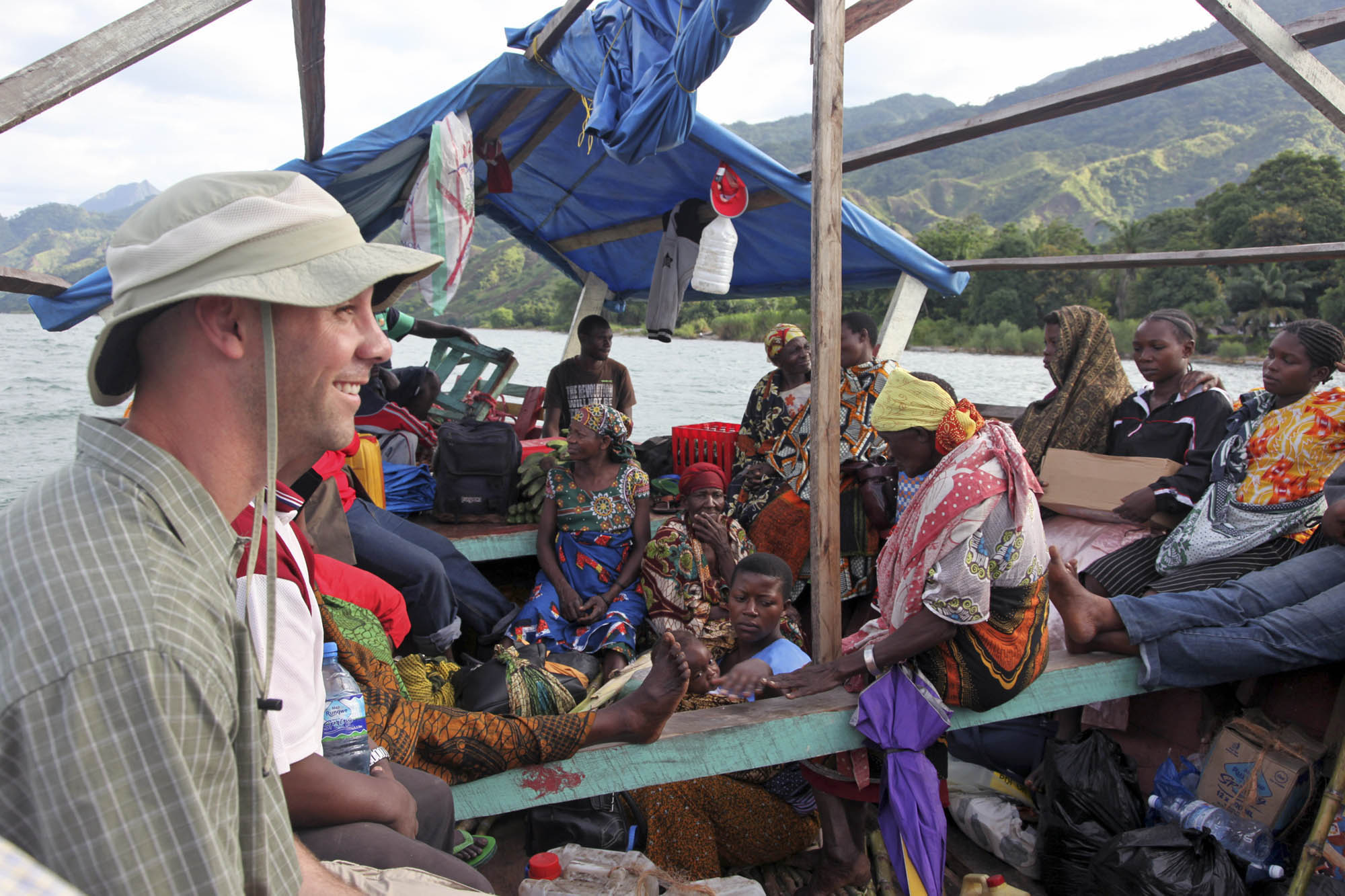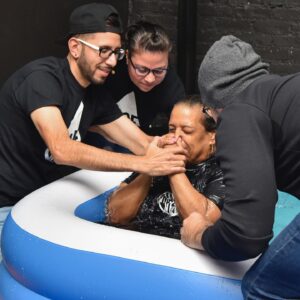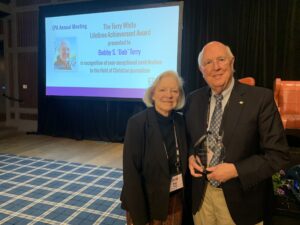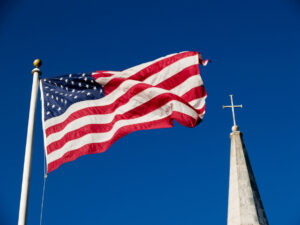
EDITOR’S NOTE: This year’s Week of Prayer for International Missions in the Southern Baptist Convention is Dec. 1-8 with the theme of “Totally His heart, hands, voice” from Matthew 22:36-39. The Lottie Moon Christmas Offering for International Missions in tandem with Cooperative Program gifts from Southern Baptist churches support nearly 5,000 international missionaries in seeking to fulfill the Great Commission. Gifts to the Lottie Moon offering are received through local Southern Baptist churches or online at imb.org/offering, where there are resources to promote the offering. This year’s goal is $175 million.
RICHMOND, Va. (BP) — For an outsider looking in at Sequoia Heights Baptist Church in Manteca, Calif., it would be hard not to ask the question, “Who are the Kisi?”
Signs in each hallway and bathroom implore members to “pray for the Kisi;” the church website prominently features the Kisi people; photos and prayer guides are on many members’ refrigerators and bedside tables. In services church members pray for the Kisi and speak of Kisi individuals by name. It is evident that the Kisi (pronounced KEY-see) are deeply embedded in the hearts of the church members.
Why? Because the members of this small church have committed to bringing the light of salvation into the spiritual darkness that surrounds the Kisi people.
In the spring of 2011, pastor Mark Mahaffie returned from a missions conference thinking it was time for his church to take the next step in missions. He then read David Platt’s book, “Radical,” and felt God’s call confirmed. He presented the idea of people group engagement to the congregation, and after praying, the church supported the idea with a unanimous vote of approval.
Once a decision was made, the church connected with the International Mission Board to learn more about choosing a people group and the process of engagement. The IMB website embrace.imbresources.org shows a map of the nearly 3,000 people groups around the world that are less than 2 percent Christian with no known evangelism among them.
“The goal is to connect with them emotionally and spiritually so that we can share the most important thing … the love of Jesus Christ,” Donnie Land, a member of the church’s missions team, said.
The church chose Acts 1:8 as their missions verse, and started thinking about how they could obey that specific command from God.
“The Scripture says to go … to the ends of the earth,” said pastor Mahaffie. “We looked at that list [of 3,000 people groups] and said, ‘God, what do you want us to do? We’re caught. We don’t have a clue.'”
The church began by looking at their history and the direction God had been leading them up to that point. They saw trends that indicated Africa, which helped them to eventually settle on Tanzania, where one of their church members was serving as a missionary. That decision narrowed their list of people groups significantly, and they prayerfully moved from a list of 30, to seven, to three and then one.
Ultimately God sent the church to the Kisi people of southern Tanzania.
Choosing the Kisi spurred the California church toward a year of prayer, research and planning. The entire congregation is working together to obey God’s command to reach the Kisi for Him.
“It is important to have the whole church behind the mission,” said Carol Jones,* an IMB missionary who helps train and facilitate churches working with sub-Saharan African people groups. “… They need a lot of people involved: praying, giving, going.”
Engaging a people group does not work as a project championed only by a church’s leaders or a specific Sunday School class. As leaders change, engagement with a people group can be threatened.
“In 3 John, we read that we should send them out in a manner worthy of the Gospel,” Jones said. “I don’t know what all that might have entailed in the first century, but to me it means a great deal of prayer support as well as financial support. … Some people can’t go because of health reasons, but they can all pray. They can all give something.”
Carol’s husband, Daniel,* is an affinity research strategist responsible for researching people groups and making sure they are engaged. Southern Baptists’ gifts to the Lottie Moon Christmas Offering and Cooperative Program enable the Joneses to help churches like Sequoia Heights follow God’s call to engage unreached people groups.
At Sequoia Heights people from different ages and skill groups stepped up to work on funding, plans, research, record keeping, training and constant prayer.
“I think our church feels very much like a team,” said the pastor’s wife Lanell Mahaffie. “Everybody is not going to go [to Tanzania] and everybody is not going to stay home, but we do feel united in what we’re doing.”
Carmen Baugh volunteered to help the church with one of the more worrisome parts of their planning: the finances. Initial calculations showed that for their church to send three teams a year they would need to raise roughly $36,000 on top of their normal budget. That amounts to $700 a week beyond normal tithing.
“We figured we can’t do 500 carwashes or anything like that because there’s just no way to earn that amount,” Baugh said. “So, we prayed about it and did a pledge drive.”
With roughly 200 members, the church knew the project could not be funded without serious help from the Lord. The ministry has been funded for more than a year now, and the congregation sees their financial success as evidence of God’s blessing on their work.
Church members say again and again that their international missions efforts will not succeed without first being rooted in prayer. John Garza took charge of the prayer efforts for the Kisi and leads the church in around-the-clock prayer coverage each time a team goes to the field. From the time team members arrive on Tanzanian soil until they’re safely back on a plane to the U.S., a member of the church body is lifting them up in prayer, asking for their safety and the wisdom to act according to God’s will.
“I strongly believe that as Christ died on the cross, He bridged the gap so now we can intercede for the Kisi people,” Garza said.
Sequoia Heights has been among the Kisi six times so far. Eleven of its members have set foot in Kisi villages, but the entire church has taken part in the ministry.
A lot of time is put into awareness meetings, events and lectures that update the members who are unable to participate outside of Manteca. The church held a “Kisi month” where they decorated the entire church building in an African style and spent time praying for, learning about and planning their ministry to the Kisi.
In addition, the youth engaged in missions training and spent more than a month learning about witnessing and how to use it in their lives as well as among the Kisi. Children and teenagers are encouraged to pray and sacrifice financially for the project just as much as the adult members. Leaders hope that some of the youth will be able to go on one of the missions to Lupingu. They are eager to model God’s use of all ages in His work.
As the congregation becomes more and more involved with the Kisi people, their enthusiasm grows.
“It’s unbelievable that God is allowing us to do this,” Mahaffie said. “And it’s all because … we say ‘yes’ to the Lord with no exceptions. He has blessed that.
“Don’t say ‘no’ before you say ‘yes,'” the pastor urged. “Start with saying ‘yes’ and let God take care of all of the no’s that are in our lives — ‘It’s inconvenient. It’s too far. I don’t have a passport. I don’t have any money.’
“All of those no’s are just saying, ‘I don’t trust God.’ … The greatest adventure of your life is just about ready to start if you will say ‘yes.'”
For information on how churches can help get the Gospel to unengaged people groups, visit call2embrace.org.
–30–
*Name changed. Zoe Allen served two years as an IMB writer.
















